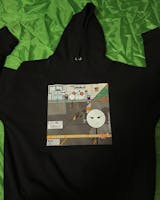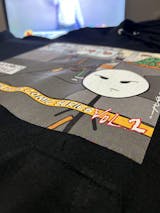Dtf prints have an important place in the scientific world. Science is used in services such as the way prints are processed, printing materials and artistic printing works. DTF printing methods occupy a lot of space in science. Science is especially important about the chemistry of materials and chemical inks to be used in printing.
The inks used in the printing process, the chemicals in the ink and the adhesive powders have the correct chemistry and are proportional to science. In order to preserve the vividness of the colors in the print, the development of inks and the production of more intense pigment determine the quality of the print. Printing planning is made by conducting scientific research in terms of vibrant colors and print durability. In order for the powders to be applied to the fabric in the best way and for the longevity of the print, it is necessary to pay attention to the quality of the chemical components. In this regard, the importance of chemical components intertwined with science is emphasized.
Heat Transfer in Dtf Printing
In order to obtain vibrant colors and quality prints, various chemical substances used from the world of science are combined and transferred to the fabric by heat transfer method for further transfer. Heat and pressure are important for the efficiency of printing. If the pressure parameters are adjusted correctly in this process, the ink quality will be revealed and the colors will be more vibrant. In this regard, conducting scientific studies with technology enables DTF to be more efficient for others.
The right printing choice and the content of chemical substances are researched for environmentally friendly and sustainable products. Following the sustainable production process of inks with DTF printing technologies, products that produce less chemical waste can be preferred based on scientific research. With the development of energy efficient transfer method and various methods in the scientific world, quality DTF prints are offered to the customers.
Features Using Science in Dtf Printing
There are many industries and application areas that benefit from the science of DTF printing. It is important for science how the prints appear on the fabric surface and what impression is obtained according to the structure of the fabrics. In scientific techniques, various researches are used for surface properties and print resistance. These studies affect the quality and durability of the print.
Textile engineers work to ensure that printing gives accurate results on textile materials and determine the factors that affect printing. Sometimes DTF prints are used in bioengineering field studies. The development of printing technology is advanced by conducting scientific research in textile products and innovative applications. In this sense, scientific research is of great importance for printing technology and innovation.
As a result of the development and improvement of DTF printing technology along with science, quality and high resolution prints result. On the other hand, customer communications and relationships with brands are strengthened, resulting in productive work. With the development of DTF printing along with science, easy printing transfers are provided on all kinds of surfaces. At the same time, it is beneficial to use more environmentally friendly and recyclable materials in line with the content of ink components and chemical products.
Thanks to the formulas developed with science and the changing innovations in the industrial world, dtf printing has many advantages for everyone. These advantages are of great importance for both customers and brands. In addition to environmentally friendly components, recyclable fabric types and various inks, more developable prints are offered to customers by researching valuable ideas contributed by science.








